Abstract
1. Rectal temperature and skin temperatures were measured in twenty-eight naked babies weighing 1·1-4·5 kg, lying supine in environments of 25-31 °C when air speed was 4-7 cm/sec. The ratio of external insulation to internal or tissue insulation for the whole body averaged 2·7 but varied inversely with body weight; the ratio was higher than this on the trunk, and five times lower than this on the hand and foot. The mean ratio rose threefold when environmental temperature was increased to 34-35° C.
2. Direct measurements of heat flow from the back of a hand placed in a water jacket maintained at 32° C were made in thirty-three babies. Heat loss averaged 3 kcal/m2.hr.° C at low environmental temperature, but the loss was often rather less than this in the first 24 hr of life. Heat loss from the hand increased three- to fourfold, during exposure to an environment of 35° C.
3. When babies more than 48 hr old were exposed to an environment of 34-35° C, heat loss from the hand only increased when rectal temperature reached between 36·6 and 37·3° C; a slightly higher rectal temperature was usually reached before heat loss rose in babies less than 24 hr old.
4. Similar methods were used to study specific tissue insulation in three babies with congenital defects of the brain who lacked evidence of temperature control. No changes in insulation were detected in these three babies following changes in environmental temperature.
5. It is concluded that the range and pattern of control that can be exerted over the specific thermal insulation of the tissues is essentially the same in babies 2-20 days old as it is in adult life.
Full text
PDF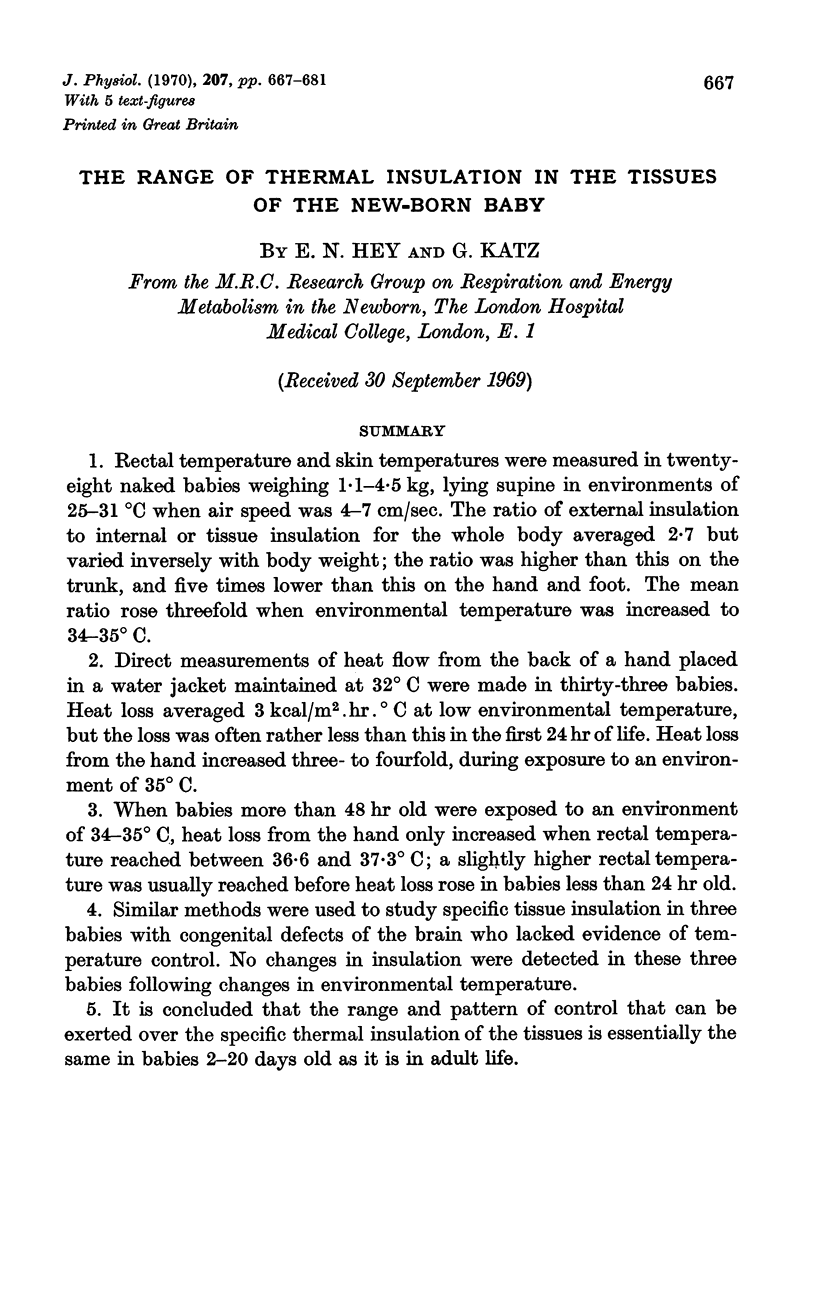

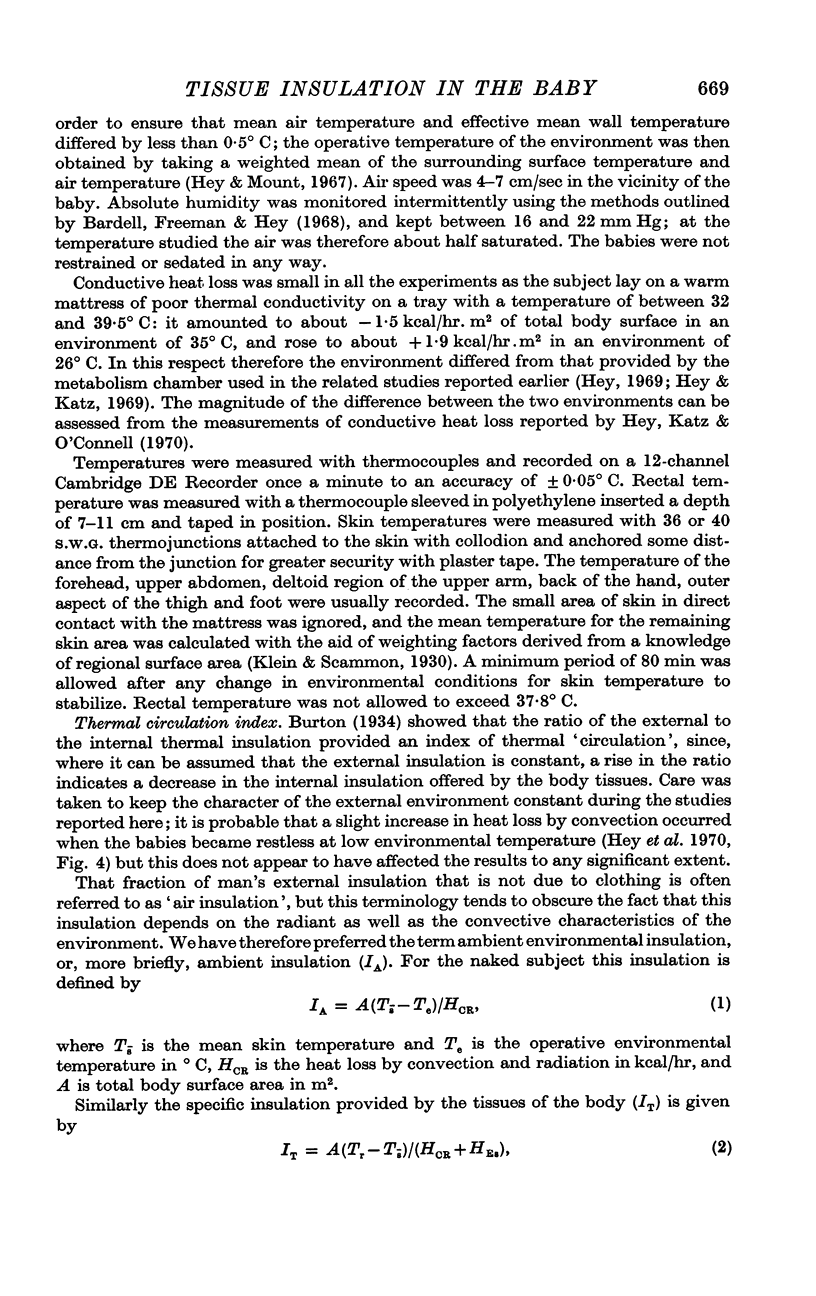

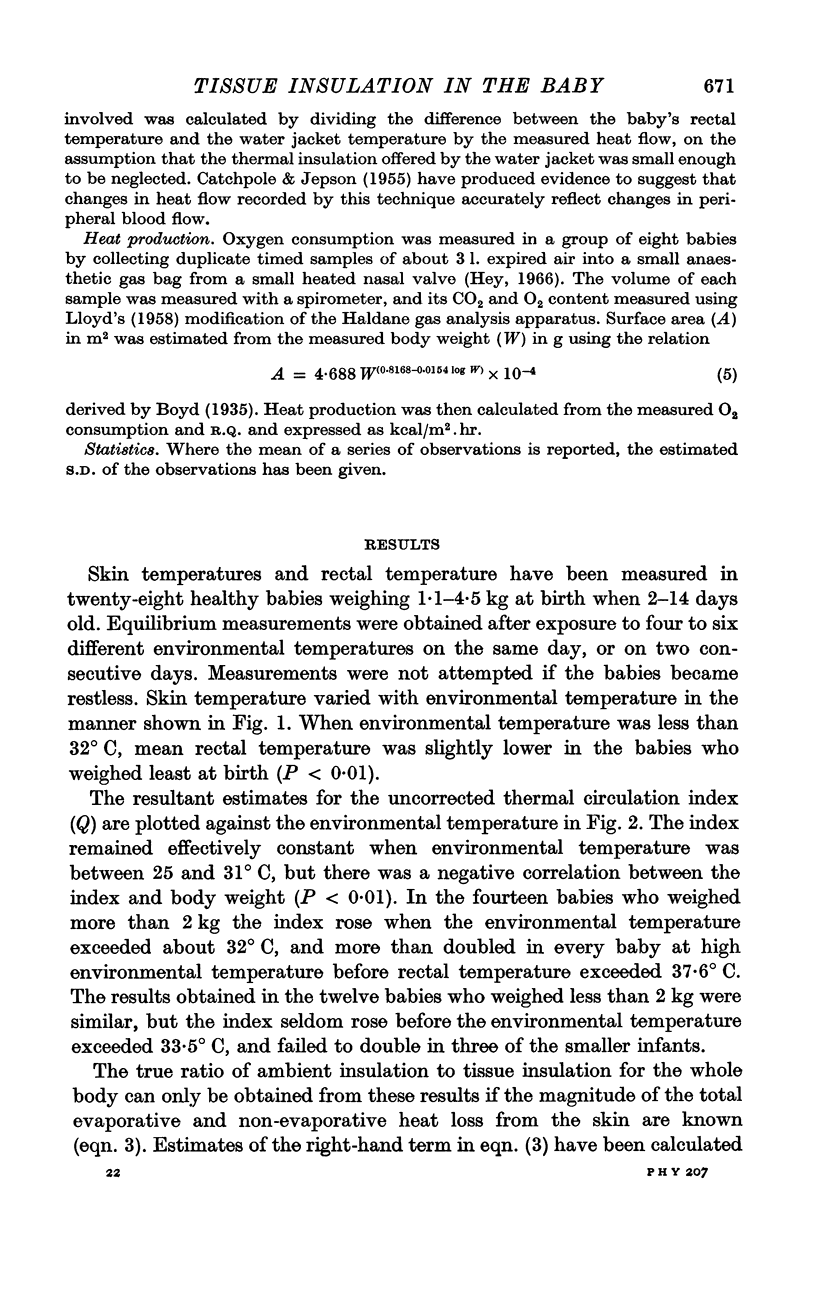
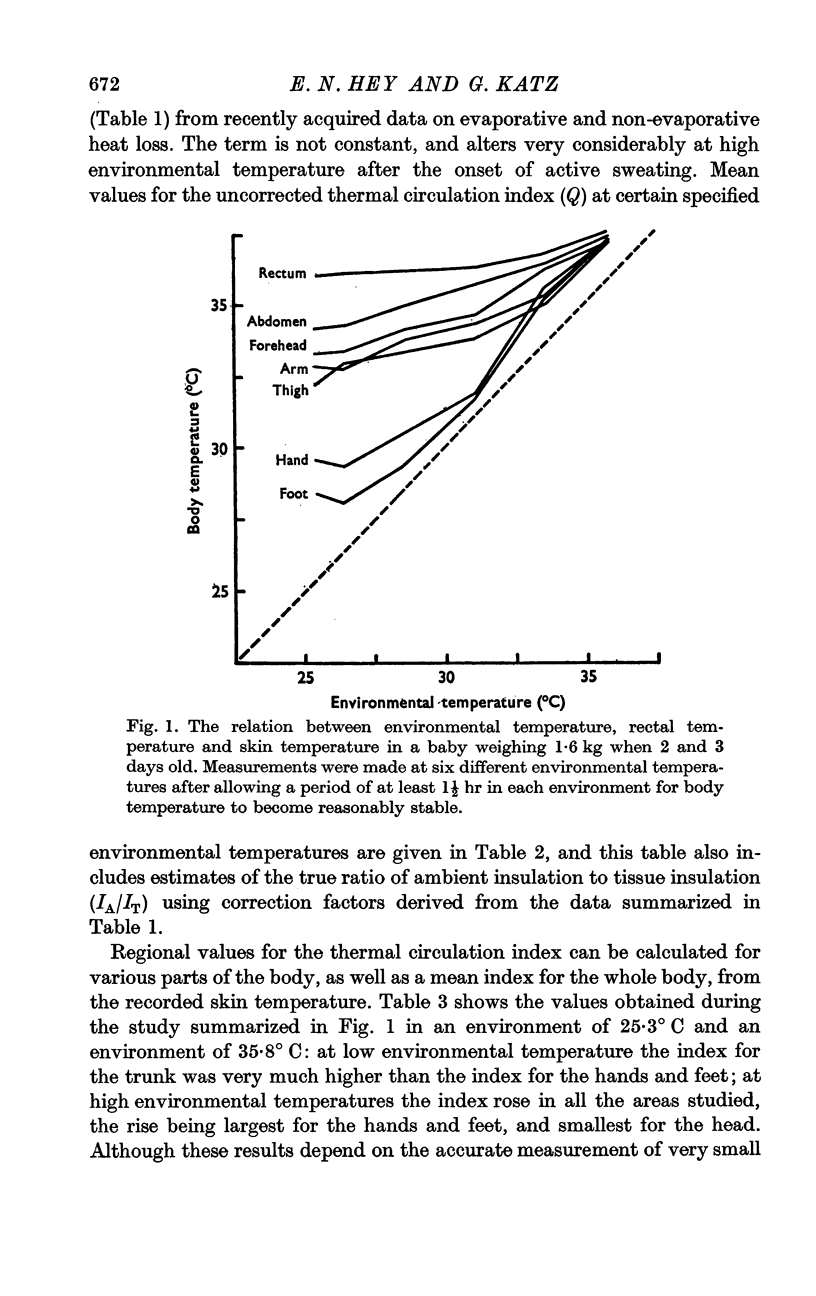
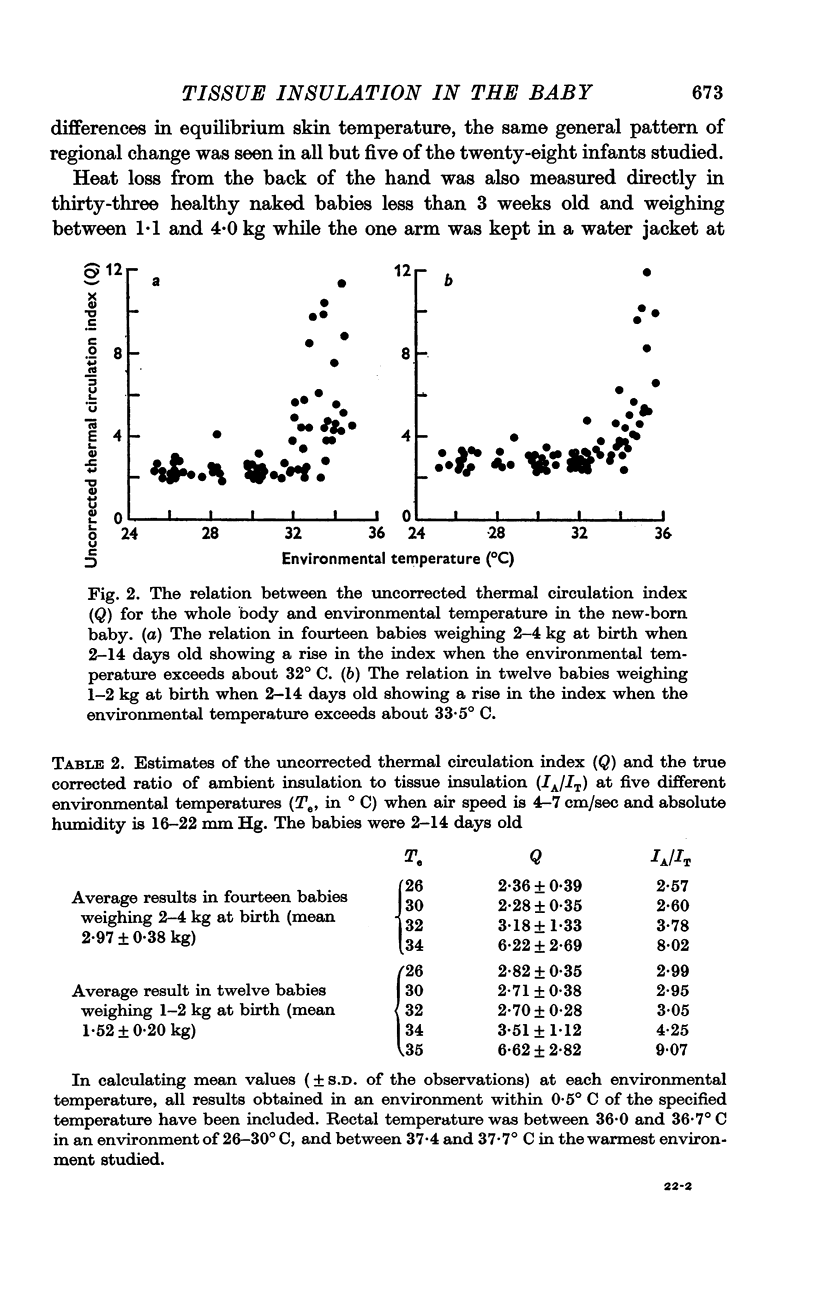
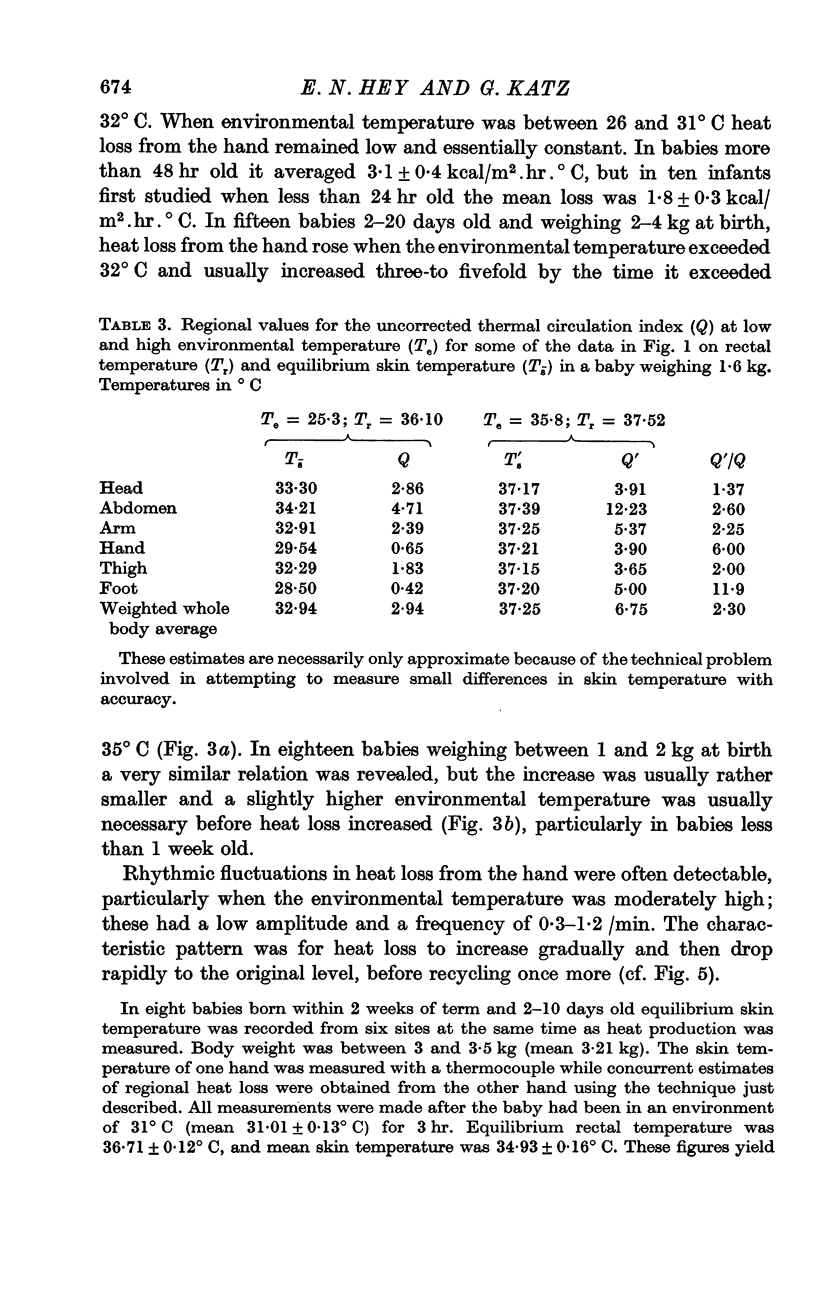
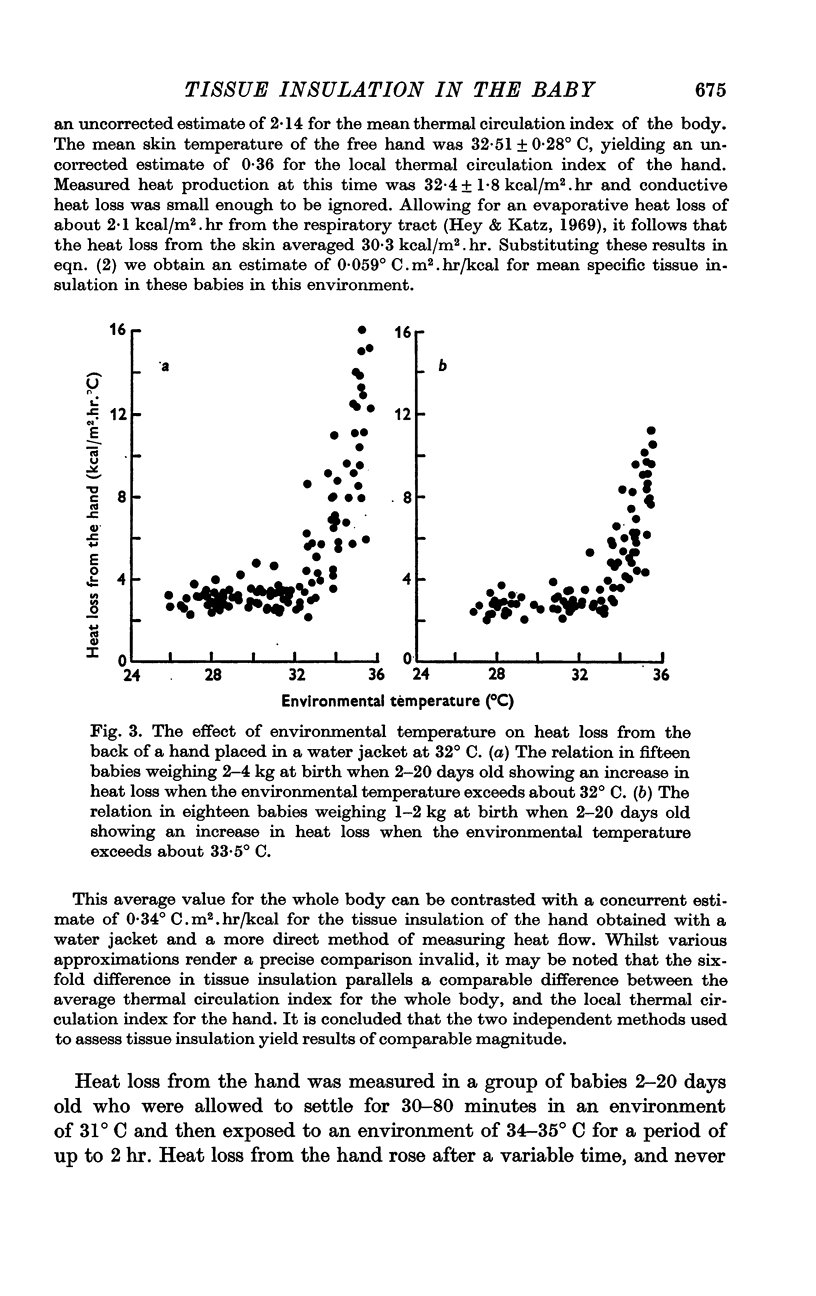
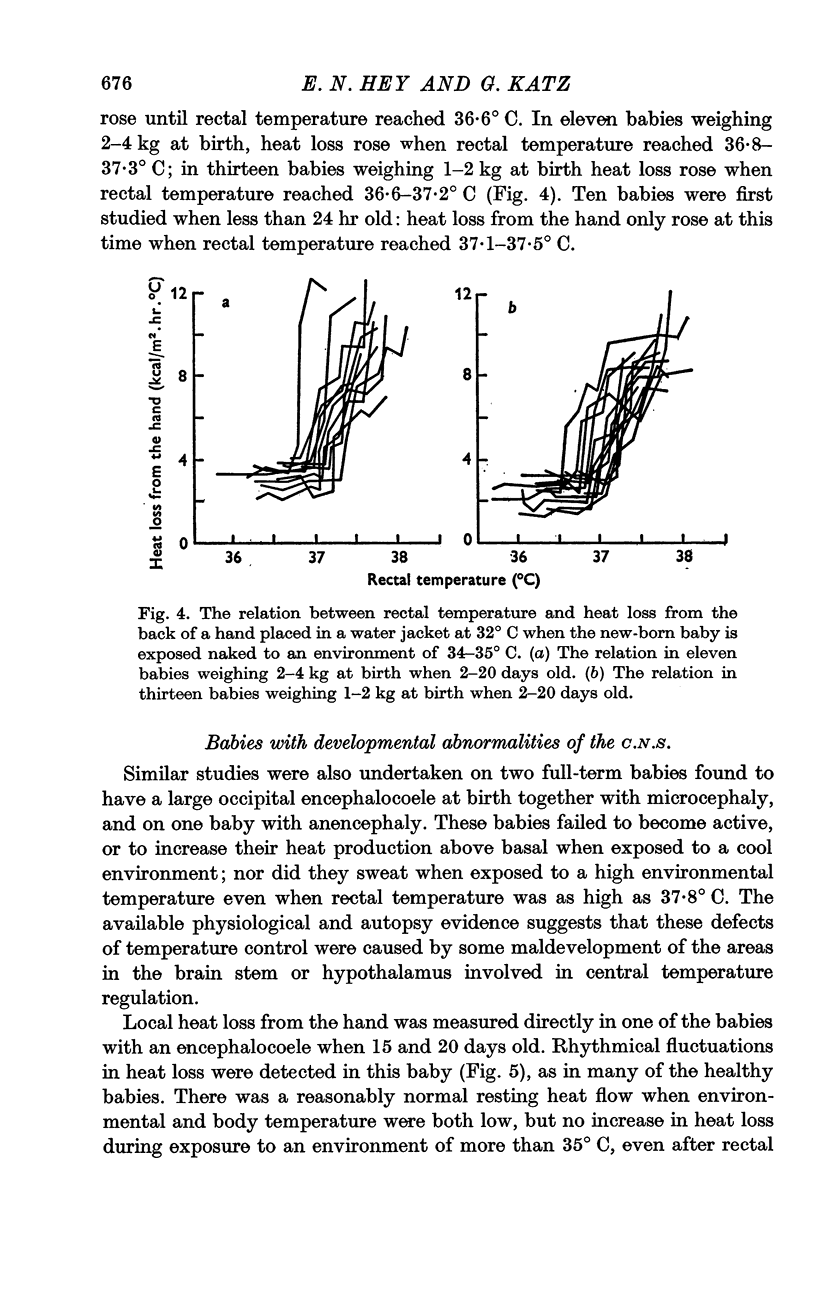
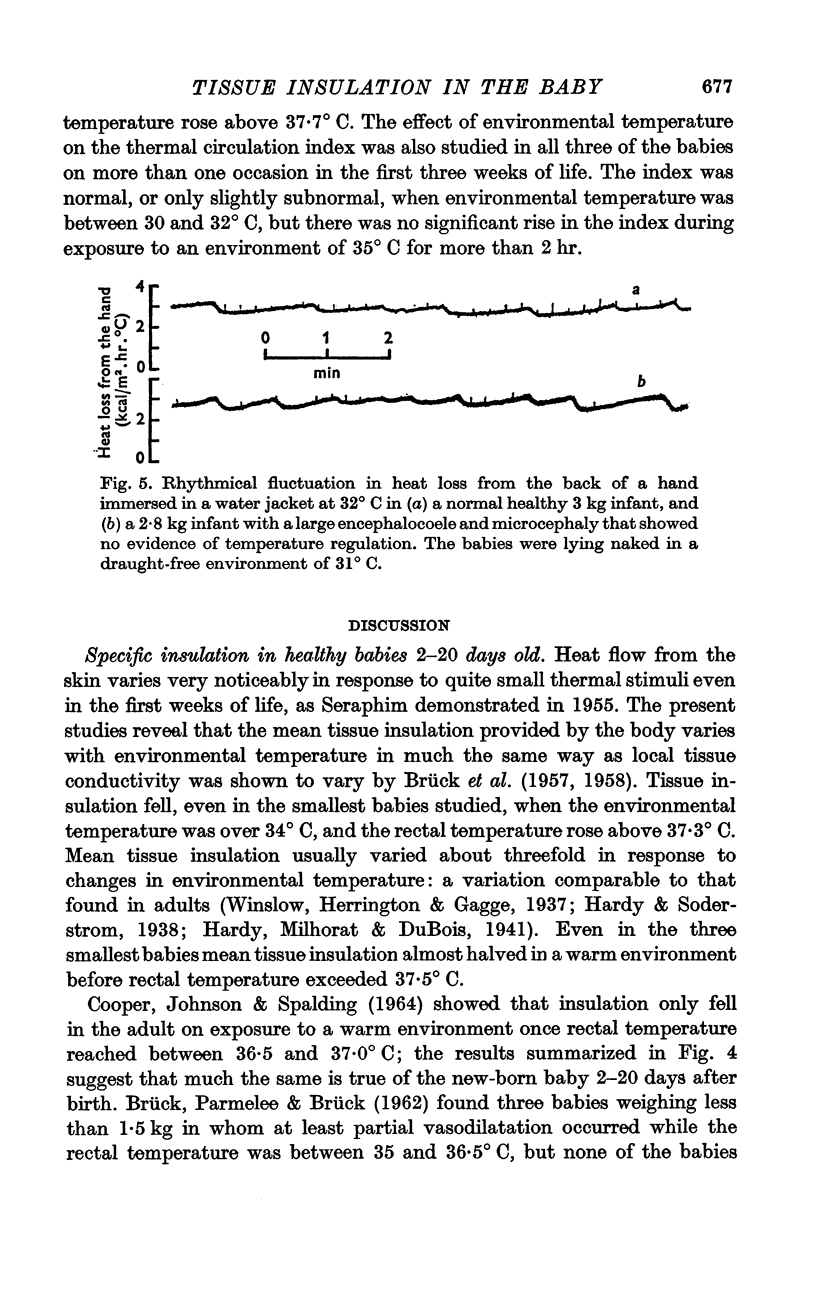
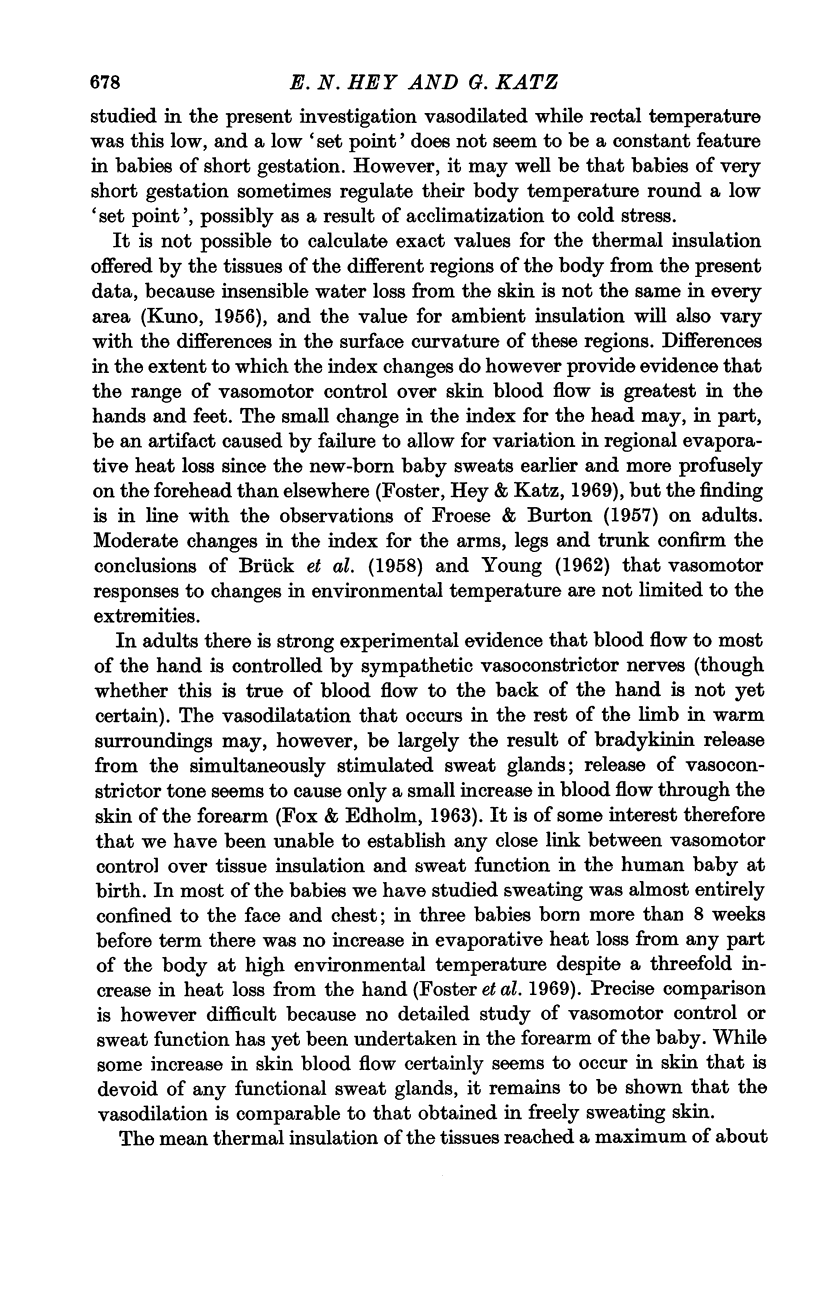
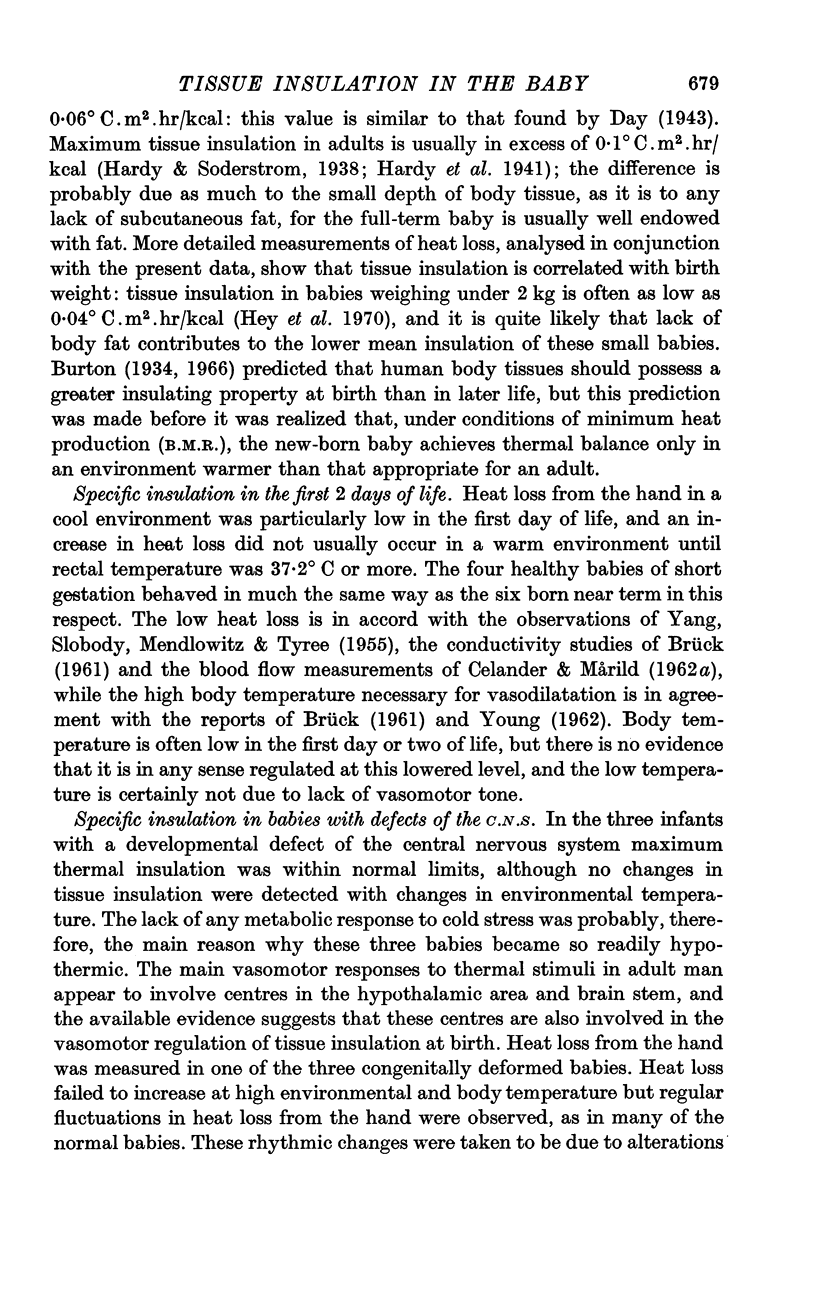
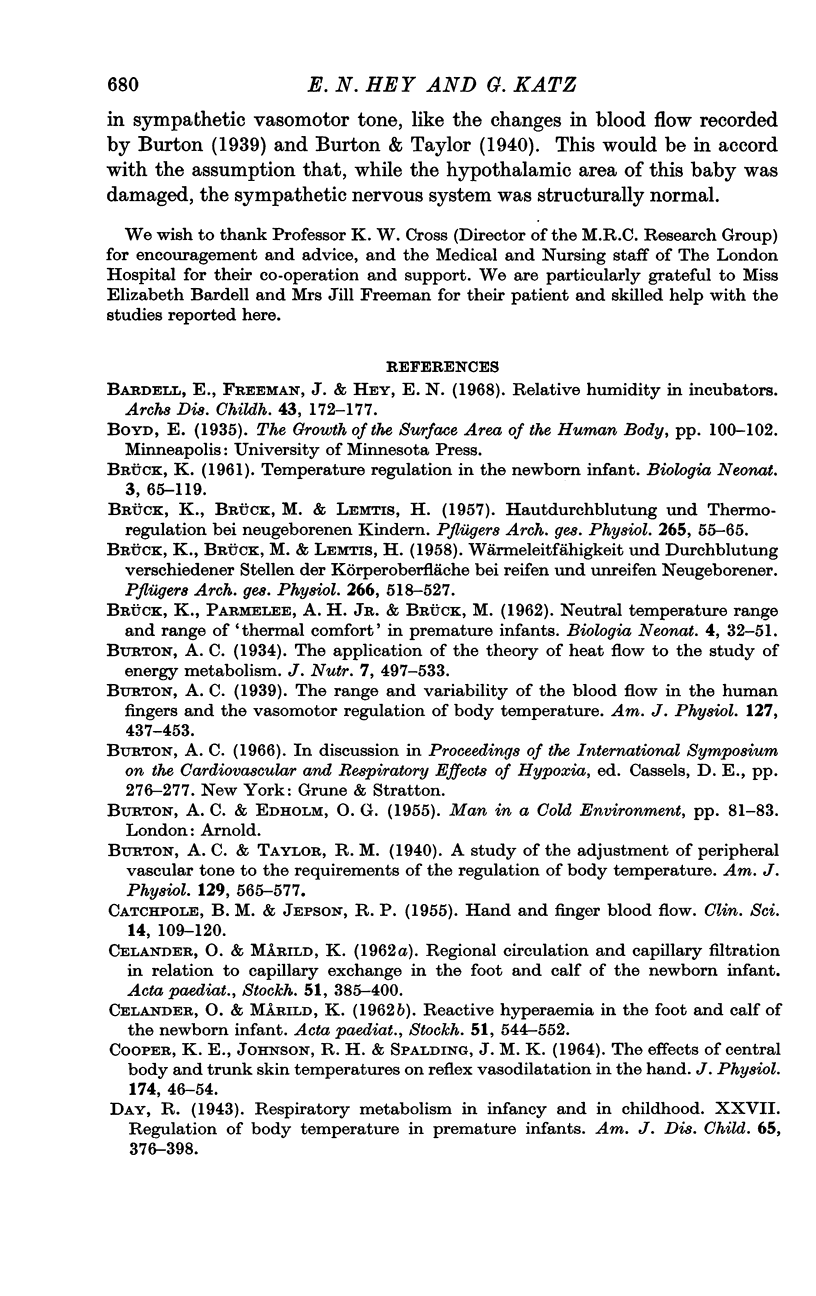
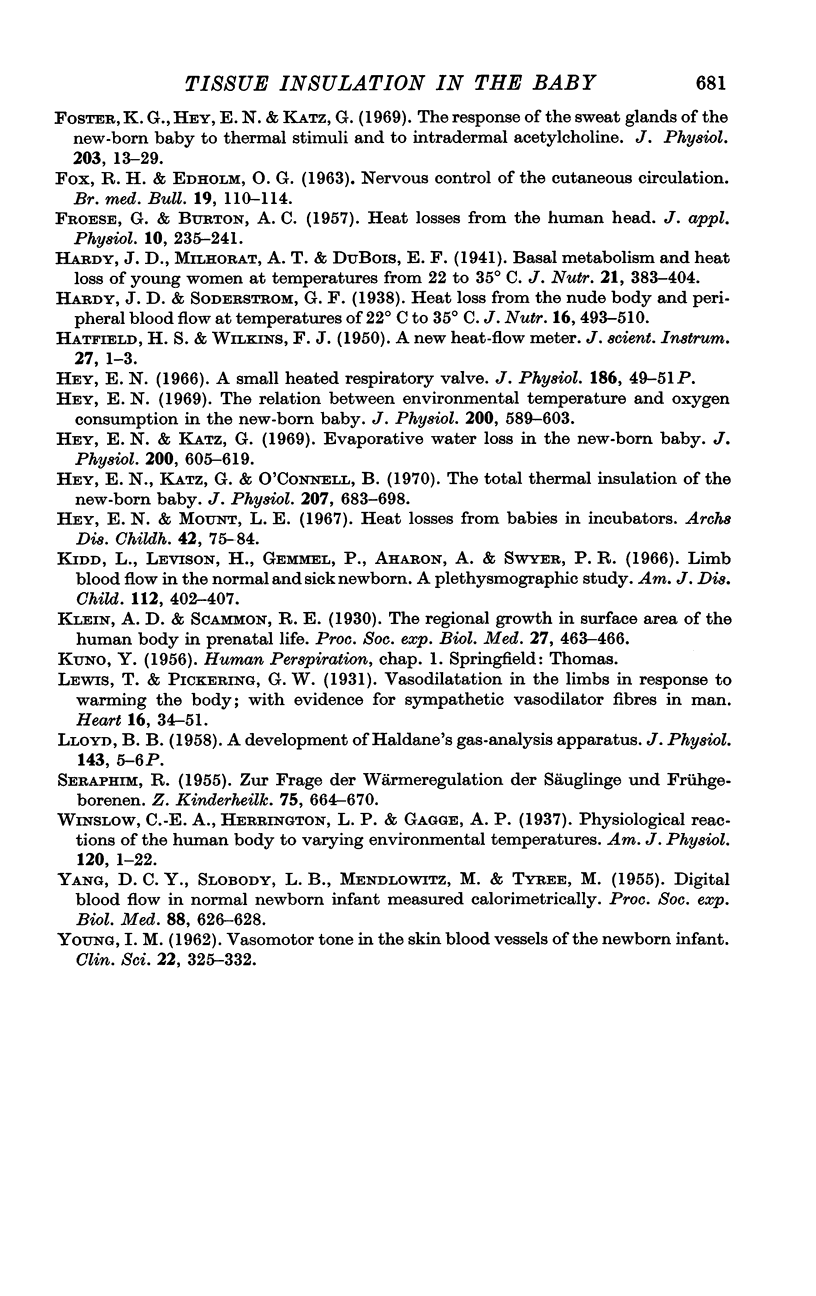
Selected References
These references are in PubMed. This may not be the complete list of references from this article.
- BRUCK K., BRUCK M., LEMTIS H. Hautdurchblutung und Thermoregulation bei neugeborenen Kindern. Pflugers Arch. 1957;265(1):55–65. doi: 10.1007/BF00364521. [DOI] [PubMed] [Google Scholar]
- BRUCK K., BRUCK M., LEMTIS H. Wärmeleitfähigkeit und Durchblutung verschiedener Stellen der Körperoberfläche bei reifen und unreifen Neugeborenen. Pflugers Arch. 1958;266(5):518–527. doi: 10.1007/BF00362256. [DOI] [PubMed] [Google Scholar]
- BRUECK K., PARMELEE A. H., Jr, BRUECK M. Neutral temperature range and range of "thermal comfort" in premature infants. Biol Neonat. 1962;4:32–51. doi: 10.1159/000239824. [DOI] [PubMed] [Google Scholar]
- Bardell E., Freeman J., Hey E. N. Relative humidity in incubators. Arch Dis Child. 1968 Apr;43(228):172–177. doi: 10.1136/adc.43.228.172. [DOI] [PMC free article] [PubMed] [Google Scholar]
- CATCHPOLE B. N., JEPSON R. P. Hand and finger blood flow. Clin Sci. 1955 Feb;14(1):109–120. [PubMed] [Google Scholar]
- CELANDER O., MARILD K. Reactive hyperaemia in the foot and calf of the newborn infant. Acta Paediatr. 1962 Sep;51:544–552. doi: 10.1111/j.1651-2227.1962.tb06580.x. [DOI] [PubMed] [Google Scholar]
- CELANDER O., MARILD K. Regional circulation and capillary filtration in relation to capillary exchange in the foot and calf of the newborn infant. Acta Paediatr. 1962 Jul;51:385–400. doi: 10.1111/j.1651-2227.1962.tb06561.x. [DOI] [PubMed] [Google Scholar]
- COOPER K. E., JOHNSON R. H., SPALDING J. M. THE EFFECTS OF CENTRAL BODY AND TRUNK SKIN TEMPERATURES ON REFLEX VASODILATATION IN THE HAND. J Physiol. 1964 Oct;174:46–54. doi: 10.1113/jphysiol.1964.sp007473. [DOI] [PMC free article] [PubMed] [Google Scholar]
- FOX R. H., EDHOLM O. G. Nervous control of the cutaneous circulation. Br Med Bull. 1963 May;19:110–114. doi: 10.1093/oxfordjournals.bmb.a070027. [DOI] [PubMed] [Google Scholar]
- FROESE G., BURTON A. C. Heat losses from the human head. J Appl Physiol. 1957 Mar;10(2):235–241. doi: 10.1152/jappl.1957.10.2.235. [DOI] [PubMed] [Google Scholar]
- Foster K. G., Hey E. N., Katz G. The response of the sweat glands of the newborn baby to thermal stimuli and to intradermal acetylcholine. J Physiol. 1969 Jul;203(1):13–29. doi: 10.1113/jphysiol.1969.sp008846. [DOI] [PMC free article] [PubMed] [Google Scholar]
- Hey E. N. A small heated respiratory valve. J Physiol. 1966 Oct;186(2):49P–51P. [PubMed] [Google Scholar]
- Hey E. N., Katz G. Evaporative water loss in the new-born baby. J Physiol. 1969 Feb;200(3):605–619. doi: 10.1113/jphysiol.1969.sp008711. [DOI] [PMC free article] [PubMed] [Google Scholar]
- Hey E. N., Katz G., O'Connell B. The total thermal insulation of the new-born baby. J Physiol. 1970 May;207(3):683–698. doi: 10.1113/jphysiol.1970.sp009088. [DOI] [PMC free article] [PubMed] [Google Scholar]
- Hey E. N., Mount L. E. Heat losses from babies in incubators. Arch Dis Child. 1967 Feb;42(221):75–84. doi: 10.1136/adc.42.221.75. [DOI] [PMC free article] [PubMed] [Google Scholar]
- Hey E. N. The relation between environmental temperature and oxygen consumption in the new-born baby. J Physiol. 1969 Feb;200(3):589–603. doi: 10.1113/jphysiol.1969.sp008710. [DOI] [PMC free article] [PubMed] [Google Scholar]
- Kidd L., Levison H., Gemmel P., Aharon A., Swyer P. R. Limb blood flow in the normal and sick newborn. A plethysmographic study. Am J Dis Child. 1966 Nov;112(5):402–407. doi: 10.1001/archpedi.1966.02090140074004. [DOI] [PubMed] [Google Scholar]
- YANG D. C., SLOBODY L. B., MENDLOWITZ M., TYREE M. Digital blood flow in normal newborn infant measured colorimetrically. Proc Soc Exp Biol Med. 1955 Apr;88(4):626–628. doi: 10.3181/00379727-88-21674. [DOI] [PubMed] [Google Scholar]
- YOUNG I. M. Vasomotor tone in the skin blood vessels of the newborn infant. Clin Sci. 1962 Jun;22:325–332. [PubMed] [Google Scholar]


